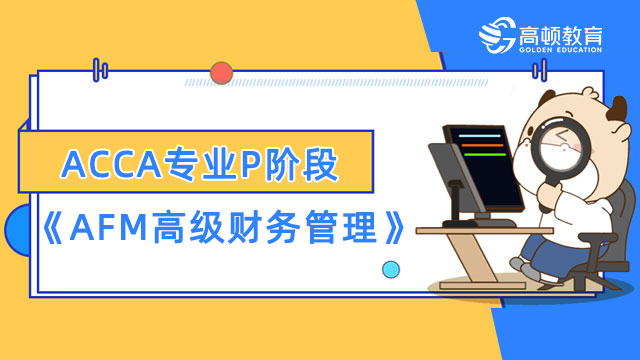ACCA考试P1总结讲义
来源:
高顿网校
2014-12-05
Governance: Directors
(a)Chairman
Running the board and setting its agenda
Ensuring the board receives accurate and timely information
Ensuring effective communication with shareholders
Ensuring sufficient time is allowed for discussion of controversial issues
Taking the lead in board development
Facilitating board appraisal
Encouraging active engagement by all the members of the board
Reporting in and signing off accounts
(b) CEO
Business strategy and management
Investment and financing
Risk management
Establishing the company’s management
Board committees
Liaison with stakeholders
(c) Division of responsibilities
CEO run the company, Chairman run the board and take the lead in liaising withshareholders
Chairman carries the authority of the board, CEO has the authority that isdelegated by the board. Unfettered powers is concentrated into on pair of hands
Avoiding conflict of interest
Board can’t make the CEO accountable for management if it is led by CEO
Board is more able to express its concerns effectively by providing a point ofreporting for the NEDs
Chairman is responsible for obtaining the information that other directorsrequire to exercise proper oversight and monitor the organizationeffectively
Compliance with governance best practice and hence reassures shareholders
(d) Roles of NEDs
Strategy. Contribute to, and challenge the direction of, Strategy
Scrutiny. Scrutiny the performance of executive management in meeting goals andobjectives and monitor the reporting of performance.
Risk. Financial information is accurate and financial controls and systems ofrisk management are robust.
People. Determining appropriate levels of remuneration for executives, and arekey figures in the appointment and removal of senior managers and in successionplanning
Contribution of NEDs:
Better balanced board(power, skills and experiences)
Representing shareholder interests(put shareholders’ viewpoint in board discussion,)
Monitoring function(monitors risks, controls and operations effectively, theperformance of executive directors)
(e) Advantages of NEDs
External experience and knowledge which executive directors do not possess.
Provide a wider perspective than executive directors
A comfort factor for third parties such as investors or creditors
Certain roles (father confessor: being a confidant for the chairmanand other directors; oil-can: intervening to make the board run moreeffectively; high-sheriff: if necessary taking steps to remove thechairman or CEO)
Full board members who are excepted to have the level of knowledge that fullboard membership implies.
(f) Problems of NEDs
Lack independence (no business, financial or other connection;Cross-directorships; should not take part in share option schemes and theirservice should not be pensionable; Appointments should not be for aspecified term and reappointment should not be automatic; Procedures shouldexist to ensure NEDs take independent advice)
Prejudice and against widening the recruitment of NEDs
High-calibre NEDs may gravitate towards the best run companies
Have difficulty imposing their views upon the board.
Not enough emphasis is given to the role of NEDs in preventing trouble
Limited time
Damage company performance by weakening board unity and stiflingentrepreneurship
(g) Remuneration package
Basic salary(experience, market rate)
Performance related bonuses(transaction bonuses; loyalty bonuses)
Shares
Share options (align management and shareholder interests, particularlyheld for a long time)
Benefits in kind (transport/ health provisions / life assurance /holidays / expenses / loans)
Pensions
(h) Remuneration policy
Pay scales
Proportion of different types of reward
Period
Be related to measureable performance
Balance between short and long-term performance elements
Transparency
Responsibilities of the board
Formal schedule of matters specifically reserved to it for decisionat board meetings
Monitoring the CEO
Overseeing strategy
Monitoring risks, control systems and governance
Monitoring the human capital aspects of the company, eg succession, morale,training
Monitoring potential conflicts of interest
Ensuring that there is effective communication of its strategic plans.
Nomination Committee
(a)Consist mainly of NEDs, to consider:
The balance between executive and independent NEDs
The skills, knowledge and experience possessed by the current board
The need for continuity and succession planning
The desirable size of the board
The need to attract board members from a diversity or backgrounds
(b)Induction
Build an understanding of the nature of the company, its business and itsmarkets;
Build a link with the company’s people
Build an understanding of the company’s main relationship including meetingswith auditors
(c) Continuing professional development
Extend their knowledge and skills continuously;
Concentrate on the role of board, obligations and entitlements of existing directorsand the behaviors needed for effective board performance.
Audit committee
(a)Function
Improve the quality of financial reporting
Reduce the opportunity for fraud
Enable the NEDs continue an independent judgement and play a positive role
Help the finance director (raise issues of concern; get difficult things done)
Strengthen the position of the external auditor
The External auditor can asserthis independence when dispute withmanagement
Strengthen the position of the internal auditor
Increase public confidence
(b) Review of financial statements andsystems
Considering performance indicators and information systems that allowmonitoring of the most significant business and financial risks.
(c) Liaison with external auditors
Being responsible for the appointment or removal of the external auditors
Any other threats to external auditor independence (non-audit service; conflictof interest)
Discussing the scope of the external audit
Acting as a forum for liaison between the external auditors, the IAs and thefinance directors
Helping the external auditors to obtain the information
Making themselves available to the external auditors for consultant
Dealing with any serious reservations.
(d)Review of internal audit
Standards including objectivity, technical knowledge and professional standards
Scope including how much emphasis is given to different types of review
Resources (enough hours, personal technical and skills)
Reporting arrangements
Work plan (review of controls and coverage of high risk areas)
Liaison with external auditors
Results
Relate to external auditor (increase the independence of external auditor; actas liaison person to facilitate the communication between the executivedirectors and external auditors; Act as coordinate the work between externalauditor and internal auditor; To monitor the independence and quality of workof external auditor)
Related to internal audit function (To approve the appointment ortermination???? of appointment of the head of internal audit; To review the workof the internal audit function)
(e)Review of internal control
Monitor the adequacy of internal control systems in mitigating???? risks(control environment, management’s attitude)
Cover legal compliance and ethics
Address the risk of fraud (report fraud, frand to be investigated)
Reviewing the company’s statement on internal controls
Consider the recommendation of the auditors in the management letter andmanagement’s response
Active supervisory role (review major transactions)
(f)Review of risk management
Confirming a formal policy in place for risk management, risk management isupdated to reflect current positions and strategy.
(g) Independence of internal auditcommittee:
Only be effective if NEDs are independence.
Crucial to discuss the management’s competence and judgement with the externalauditors, if not, they may feel loyalty towards management
Investors’ confidence
Reporting of the internal audit committee need the NEDs’ independence,otherwise influence the integrity of the auditors.
Internal auditors/external auditors comparison of role in the context ofcorporate governance
(a)Assess the need for internal audit
Scale, diversity and complexity of the company’s operations
Number of employees
Cost-benefit considerations
Changes in organizational structure
Changes in key risks
Problems with internal control systems
Increased number of unexplained or unacceptable events
(b)Role of internal audit function
Independent checking, examination and evaluation the internal control systemestablished by executive director.
Internal control over financial reporting
FS whether show true and fair
Internal control over operation
Operational information(management information)
Review of “3E”
Review of “3E”
Review of compliance with laws and regulations
Review of safeguarding of the organization’s assets
Review of implementation of corporate goals and objectives
Review of significant risks to the organisation, monitoring risk managementpolicy and risk management strategies.
(c) Advantages of appointing internalauditor from outside the company:
External appointment would bring detachment and independence (reduce or avoidsthe independence and familiarity threats)
An external appointment would help with independence and objectivity. Own nopersonal loyalties nor ‘favours’ from previous positions. Have no personalgrievances nor conflicts with other people. (Increase the confidence ofinvestors)
Some benefit would be expected from the “new broom effect’ in that theappointment would see the company through fresh eyes .(bring a fresh pair ofeyes to the task)
Come in with new ideas and expertise gained from other situations
The possibility exists for the transfer of best practice in from outside.(bestpractice and current developments can be introduced)
(d) Review of the risk management
Identification. Risks comes and go with the changing nature of businessactivity, and with the continual change in any organization’s environment.
Assessment. The probability of the risk being realized; the impact or hazard.
Review. Analyses the controls that the organization has.
Report. A report on the review is produced and submitted to the principal.
(e)Social and environmental audit: Why
There is a growing belief that environment issues represent a source of risk interms of unforeseen liabilities, reputational damage, or similar.
The ethical performance of a business, such as its social and environmentalbehaviour, is a factor in some people’s decision to engage with thebusiness in its resource and product markets.
An increasing number of investors are using social and environmentalperformance as a key criterion for their investment decisions.
(f)Environmental audit: what
Is a systematic, documented, periodic and objective evaluation of how well anentity, its management and equipment are performing, with the aim of helping tosafeguard the environment by facilitating(??) management control of environmentpractice and assessing compliance with entity policies and externalregulations.
版权声明:本条内容自发布之日起,有效期为一个月。凡本网站注明“来源高顿教育”或“来源高顿网校”或“来源高顿”的所有作品,均为本网站合法拥有版权的作品,未经本网站授权,任何媒体、网站、个人不得转载、链接、转帖或以其他方式使用。
经本网站合法授权的,应在授权范围内使用,且使用时必须注明“来源高顿教育”或“来源高顿网校”或“来源高顿”,并不得对作品中出现的“高顿”字样进行删减、替换等。违反上述声明者,本网站将依法追究其法律责任。
本网站的部分资料转载自互联网,均尽力标明作者和出处。本网站转载的目的在于传递更多信息,并不意味着赞同其观点或证实其描述,本网站不对其真实性负责。
如您认为本网站刊载作品涉及版权等问题,请与本网站联系(邮箱fawu@gaodun.com,电话:021-31587497),本网站核实确认后会尽快予以处理。
点一下领资料
【整理版】ACCA各科目历年真题
真题高频考点,刷题全靠这份资料
下载合集
acca全科学习思维导图
梳理核心考点,一图看懂全部章节
下载合集
2023年acca考纲解析
覆盖科目重难点,备考按照计划走
下载合集
acca备考 热门问题解答
- acca考试怎么搭配科目?
-
建议优先选择相关联的科目进行搭配报考,这样可以提高备考效率,减轻备考压力,1、F1-F4:为随时机考科目,难度较低,这里可以自行随意选择考试顺序。2、F5-F9:如果你的工作的和财务会计或者审计有关、或者你比较擅长财务和审计的话,推荐先考F7和F8。你可以选择一起考ACCA考试科目F7和F8或者先考F7(8)再考F8(7),这就要取决你一次想考几门。3、P阶段:选修科目中,建议企业首选AFM!第二部分科目进行选择,如果AA和SBR掌握学生更好,可以通过选择AAA,如果SBL掌握的好,可以自己选择APM。
- acca一共几门几年考完?
-
acca一共有15门考试科目,其中有必修科目和选修科目,考生需要考完13门科目才能拿下证书。
- acca一年考几次?
-
acca一年有4次考试,分别是3月、6月、9月和12月,分季机考科目是采取的这类四个考季的模式,而随时机考则是没有这方面的时间规定限制,可以随报随考。
- acca的含金量如何?
-
ACCA证书的含金量是比较高的,从就业、能力提升、全球认可等角度来说,都是比较有优势的证书,其含金量主要表现在以下几个方面:1、国际化,认可度高;2、岗位多,就业前景好;3、缺口大,人才激励。
严选名师 全流程服务
其他人还搜了
热门推荐
-
acca专业阶段考试科目有哪些?究竟都考些什么? 2023-04-23
-
accaP阶段科目考完需要多久?速戳了解! 2023-03-28
-
ACCA高级课程是哪几门?和基础课程比难度怎么样? 2023-03-17
-
sbr和sbl哪个难?accaP阶段先考哪个? 2023-03-16
-
accaP阶段报名费是多少?一文介绍全了! 2023-03-14
-
accaP阶段有哪些科目?各科目详细介绍! 2023-03-14
-
accap阶段考试顺序是怎样的?选修科目怎么选? 2023-03-10
-
acca考试科目:《ATX高级税务》重点详解! 2023-03-06
-
acca考试科目:《APM高级业绩管理》重点详解! 2023-03-06
-
acca考试科目:《AFM高级财务管理》重点详解! 2023-03-06
-
accap阶段有效期是多久?需要几年内考完? 2023-03-01
-
accaP阶段选修选哪两门?各科难度对比来了! 2023-02-28
-
2023年acca的sbl怎么学?点击查收备考攻略! 2023-02-24
-
acca考试p阶段科目题型,附各科分值参考! 2023-02-23
-
accap阶段要考几门?重难点是什么? 2023-02-10
-
accap阶段要考几门?重难点是什么? 2023-02-10
-
accaP阶段科目怎么搭配?先考哪门? 2023-02-09
-
ACCA专业P阶段:《AFM高级财务管理》复习攻略 2023-01-30
-
accap阶段选哪两门?考试重难点介绍! 2023-01-17
-
acca考试科目:《AAA高级审计与鉴证》题型及重点! 2023-01-17
-
acca专业阶段考试难度分析,选修科目报考指南来了! 2023-01-12
-
accap阶段报考顺序推荐,先报哪个好? 2022-12-15
-
ACCAp阶段一次最多考几门?成绩有效期是多久? 2022-08-24
-
ACCA的p阶段需要备考多久才够?考试难度怎么样? 2022-08-18
-
ACCAp阶段考试需要考几门?考试时间是哪天? 2022-08-15
-
ACCA考试P阶段考几门?P阶段成绩有效期是多久? 2022-08-12
-
ACCAP阶段科目难度高吗?P阶段是机考吗? 2022-08-10
-
ACCA最后四门难考吗?通过率怎么样? 2022-07-19
-
ACCA英语不好怎么办?怎么提高英语? 2022-07-14
-
ACCA机考报名时间是什么时候?怎么报考? 2022-07-14
 更多服务
更多服务








































